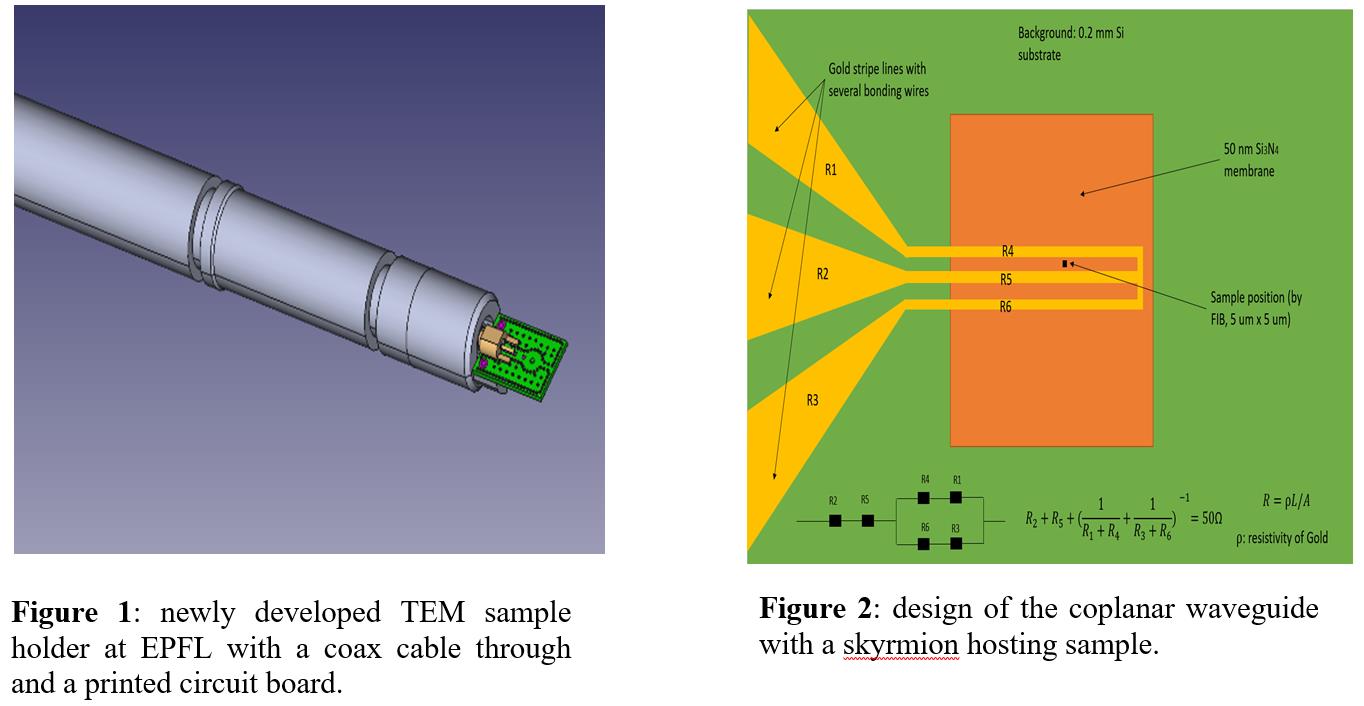Real space studies on the skyrmion lattice and its dynamics in chiral magnets
- Abstract number
- 453
- Event
- European Microscopy Congress 2020
- DOI
- 10.22443/rms.emc2020.453
- Corresponding Email
- [email protected]
- Session
- PST.7 - Fast and Ultrafast dynamics using Transmission Electron Microscopy
- Authors
- Mr. Le Yu (1, 2, 3), Dr. Ivan Madan (1), Dr. Jian-Rui Soh (2), Ms. Ping Che (2), Prof. Dr. Dirk Grundler (2), Prof. Dr. Fabrizio Carbone (1), Dr. Thomas LaGrange (1)
- Affiliations
-
1. Laboratory for Ultrafast Microscopy and Electron Scattering (LUMES) EPFL
2. Laboratory of Nanoscale Magnetic Materials and Magnonics (LMGN) EPFL
3. Laboratory for Neutron Scattering and Imaging (LNS) PSI
- Keywords
LTEM, skyrmion, spin wave, spintronics, pump-probe
- Abstract text
The skyrmion lattice (SkL) is a novel and intrinsic form of a magnonic crystal with nanoscale lattice constants [1]. They provide new perspectives for studying the manipulation of spin waves in solids [2]. In this project, we aim at investigating the spin-wave dynamics (GHz) of the Bloch-type SkL in ~100 nm thin lamellas of Co8Zn8Mn4 [3] by means of ultrafast Lorentz Transmission Electron Microscopy (LTEM). The GHz microwave signal will be transmitted through a custom-built TEM sample holder entirely developed at EPFL (Fig. 1), including a coplanar waveguide fabricated on a Si chip with an electron transparent Si3N4 membrane (Fig. 2). The Si chip is fixed on a printed circuit board, specially designed to provide 50 Ω impedance matching and to reduce signal loss and parasitic, high frequency modes. Focused ion beam TEM samples are cut from bulk crystals and are laid across the signal and grounds lines of the coplanar waveguide such that the GHz electrical signals generate sinusoidal magnetic fields to stimulate magnetic dynamics [4].
The goal is to spatial-temporarily resolve the breathing mode of the SkL by pump-probe experiment [5]. In addition, a broad range of new technical domains are opened through the innovative design of this TEM sample holder, where studies on the dynamics of various materials resonantly excited by AC magnetic field or electric field up to 18 GHz will become possible. We therefore expect that further scientific topics beyond skyrmions are suitable for the sample holder together with the time-resolved TEM at EPFL [5]. Moreover, understanding the spin wave dynamics of the SkL can pave the path towards future skyrmion-based spintronic applications for modern communication and information processing technologies with ultra-low energy consumption. In our presentation, we will discuss the performance of this custom-built holder and chip design in the context of the preliminary studies on the breathing mode dynamics in the SkL of Co8Zn8Mn4. This work is funded by SNF via the Sinergia project 171003.
- References
1. Nagaosa, N. and Y. Tokura, Topological properties and dynamics of magnetic skyrmions. Nature Nanotechnology, 2013. 8(12): p. 899-911.
2. Huang, P., et al., In Situ Electric Field Skyrmion Creation in Magnetoelectric Cu2OSeO3. Nano Letters, 2018. 18(8): p. 5167-5171.
3. Tokunaga, Y., et al., A new class of chiral materials hosting magnetic skyrmions beyond room temperature. Nature Communications, 2015. 6: p. 7.
4. Schwarze, T., et al., Universal helimagnon and skyrmion excitations in metallic, semiconducting and insulating chiral magnets. Nature Materials, 2015. 14(5): p. 478-483.
5. Berruto, G., et al., Laser-Induced Skyrmion Writing and Erasing in an Ultrafast Cryo-Lorentz Transmission Electron Microscope. Physical Review Letters, 2018. 120(11): p. 6.

